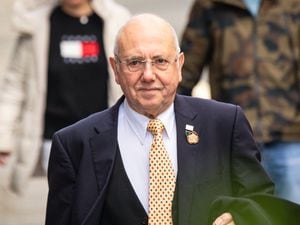What does that £93,000 really mean?
SO, WHERE do you stand on the two-school model for the future of education that’s been suggested by a number of States members?

Really?
I see – but you do know that you’re wrong, don’t you?
And it’s easy to say that.
About 93,000 reasons to reach this conclusion.
Yes, timing comes into this, so you might be right in the future. But for or against, your view right now is ‘wrong’ in that it’s not – in States-speak – evidence-based.
Not only do we not know whether having two schools is good or bad, we don’t even know whether (warning: another States buzzword) the education estate can accommodate that.
For this insight we are obliged to the group of deputies who have proposed pruning Education, Sport & Culture’s three high school approach as a consequence of ending the 11-plus to just two.
Specifically, of course, it’s because they’ve been given a large sum of money – £93,000 – to find out whether it’s a case of three schools good, two schools better.
Except they haven’t.
And at this stage even I’m confused. So today, we shall mostly be discussing what the sum Policy & Resources has released really means. And though I say so myself, it’s rather revealing.
So please, pull up a chair…
The four deputies, loosely headed by Richard Graham and Matt Fallaize, are proposing the two-school approach for a number of reasons but particularly cost, and because many of the island’s educationalists, and all those leading post-16 education, are strongly opposed to what ESC is currently proposing.
That strength of feeling ranges from three schools and the rest of the package being sub-optimal from a learning perspective to being frankly unworkable in total.
Pretty strong stuff, so in researching whether two schools could work and might even be desirable, the dissenting deputies approached Education to ask two questions.
1. Where, if at all, could two age 11-18 schools accommodating 1,225-1,400 pupils be located on the existing four sites?
2. What were the results of the curriculum modelling to work out the impact on the sixth form(s) of having just two schools?
Answer? None. Education didn’t know.
Did. Not. Know.
Couldn’t begin to say.
Let that sink in a bit.
The department charged with examining all options for the future of secondary schooling and recommending the best, hadn’t looked properly at a two-school model.
Or, to be charitable, if they had, the way they had gone about it wasn’t good enough to be released to their questioners.
What happened next is also revealing. Education went – I suppose it’s obligatory here to say ‘cap in hand’ – to Policy & Resources because getting the answers was going to cost quite a bit.
ESC, you will remember, is an exemplar of government efficiency and cost-cutting while its approach to budget discipline is marvelled at by other States members.
Which means it didn’t have the funds to get the answers the deputies wanted but which it, apparently, thought were irrelevant to the future of education locally.
Anyway, P&R agreed to find up to £93,000 extra funding, and I quote, ‘to enable the Office for Education, Sport & Culture to impartially support those members who wished to investigate a two-school model proposal’.
The bulk of that will go on independent architects who will do the necessary when checking sites and working out whether we can physically accommodate what by Guernsey standards would be quite large schools – peaking on current data at 1,400 pupils before dropping back later to current levels of 1,225 or thereabouts.
I’ve been following what government does for a while now and can’t recall another case of where a deputy or deputies were mulling an amendment to a policy proposal and were then actively funded to pursue alternatives.
It sounds a bit like getting a grant to prepare an external minority report, doesn’t it?
This is what P&R said when challenged on the point: ‘Both committees recognised that this is an unusual set of circumstances but considered it to be important to enable the Assembly to make decisions without further delay following a properly informed debate.’
Properly informed, eh?
There are two ways of reading this. The first is that P&R will cheerfully fund any madcap proposal/amendment floated by a deputy because, hey, that’s democracy. Or, secondly, that there is a serious information deficiency in the schools debate that simply has to be rectified.
You could conclude, I suppose, that this is P&R acknowledging Education hasn’t done its job properly in ruling out the two-school model because it can’t produce the information on which it based that decision.
You could even take the view that this is an extraordinary omission by a committee whose competence has already been pretty severely questioned. In doing so, you might recall P&R president Gavin St Pier’s comments in July, when ESC’s finalised proposals emerged, that P&R wanted to ‘scrutinise the underlying financial detail and assumptions’ in it and assume this is part of that critical process.
If you do, however, never say so in public. Otherwise, you might, like I have, find yourself threatened on social media by a member of ESC.
Just so you know.
I SEE that what’s been called the lack of ‘equitable accountability’ has been raised over the issue of the very sad deaths of two babies at the Princess Elizabeth Hospital and the very public way some midwives have been dealt with.
In effect, goes the thinking, have the consultants involved been let off the hook?
As is the way with cases like this, the reality is far from simple.
We know from past experience that when an unfortunate incident happens at the hospital all aspects and all those involved are investigated – hardly surprising, as these days treatment tends to be via multi-disciplinary teams.
So it’s a pretty safe bet that both the NMC, the nursing and midwifery regulator, and the GMC, which has the same function for doctors, were both involved over the incidents.
But what if they came to slightly different conclusions?
In the NMC’s case, it decided that there had been some bad practice, and took the midwives to a public hearing. Yet the GMC did not feel the need to do so in the case of the doctors involved.
That’s revealing and informative, but we don’t know why. In turn, the absence of comment on that suggests to me those involved – Health, the GMC and the Medical Specialist Group – agreed not to make comment pending any inquest, which would establish cause of death.
If I’m right then clearly the Crown Officers’ delay in arranging the hearing, which finally got going on Tuesday, hasn’t helped matters.
Nor, indeed, has the NMC’s decision to hold hearings, because those are always in public and guaranteed to attract headlines.
While this is a slightly long-winded way of suggesting why we haven’t heard anything about the consultants’ role in this – but might yet do so – I wanted to make a slightly different point.
Forget what’s actually been broadcast or printed, many now believe the midwives have been hung out to dry and were responsible for what happened.
That, however, is not the case.
The NMC may have found the midwives guilty of poor practice, but it did not say that led directly to the deaths which, for all we know, may have happened whatever treatment was given.
That, surely, is a matter for the inquest to determine. So the more significant question is why it has taken nearly four years to hold one.





